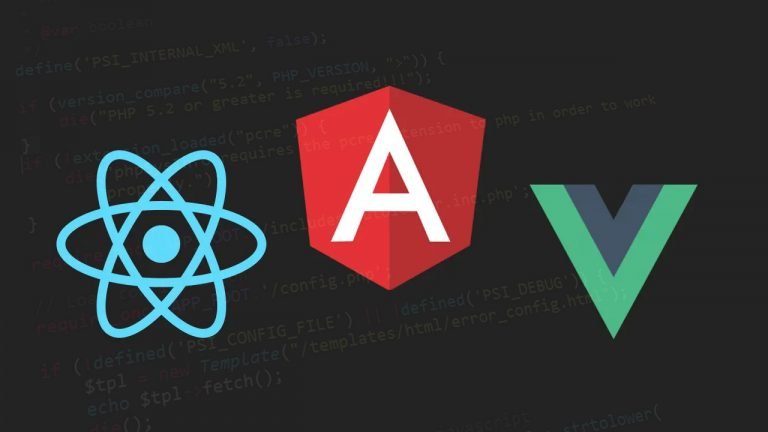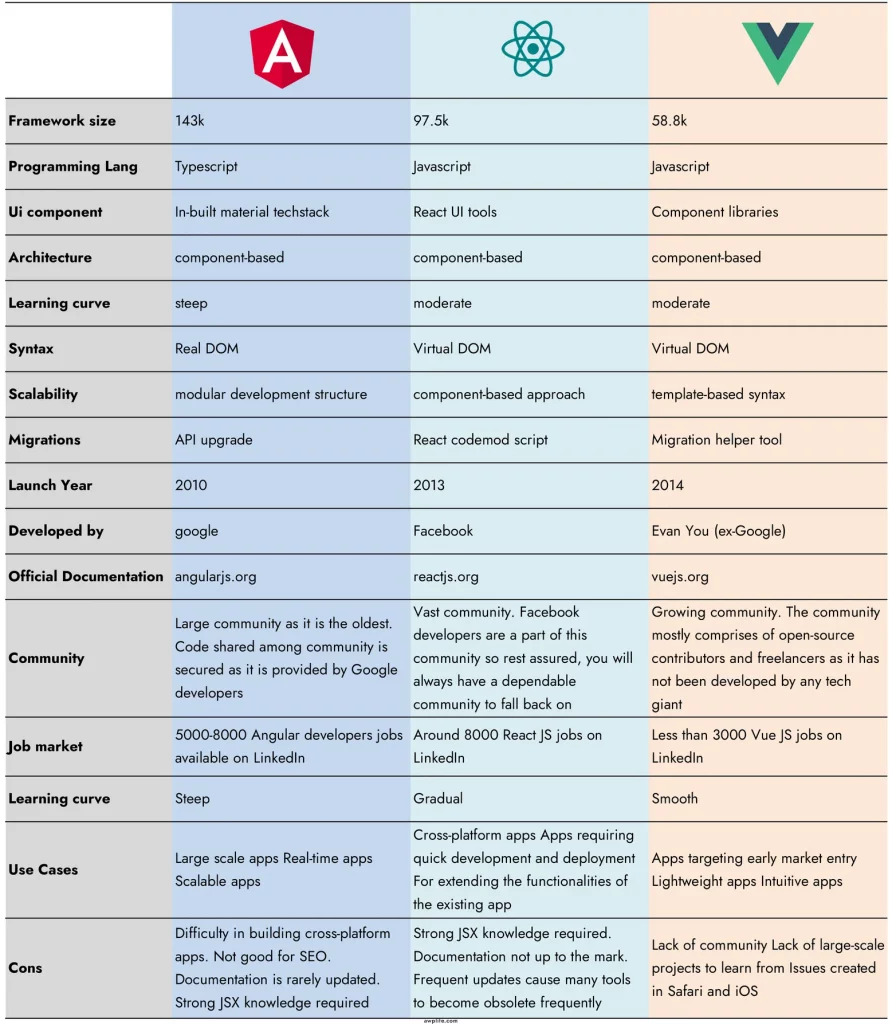
JavaScript frameworks are collections of pre-written JavaScript code that provide developers with a structured and efficient way to build web applications. They offer a set of tools, functions, and utilities that simplify common tasks and enable developers to focus on building application logic rather than dealing with low-level implementation details.
These frameworks are designed to address the challenges of developing complex and interactive web applications. They provide features like data binding, component-based architecture, routing, state management, and more. By leveraging these features, developers can build applications faster, with less code and effort.
JavaScript frameworks also promote code reusability and maintainability. They encourage modular development by breaking down applications into smaller components that can be reused across different parts of the application or in other projects. This approach reduces duplication of code, improves maintainability, and allows for easier collaboration among developers.
Choosing the right JavaScript framework for a project is crucial. Different frameworks have their own unique features, syntax, and architectural patterns. Factors to consider include the project requirements, team expertise, community support, and performance considerations.
React.js, Angular, and Vue.js are three of the most popular JavaScript frameworks today. They have large and active communities, extensive documentation, and are widely adopted by developers. Each framework has its own strengths, use cases, and performance characteristics, making it essential to compare and evaluate them before making a decision on which one to use for a particular project.
React.js
React.js, developed by Facebook, is a widely adopted JavaScript library known for its efficient and flexible approach to building user interfaces. With a component-based architecture, React.js allows developers to break down the user interface into reusable components that manage their own state and can be composed together to create complex UIs.
At its core, React.js leverages a virtual representation of the Document Object Model (DOM), known as the virtual DOM. This approach enables React.js to efficiently update and render UI elements by minimizing direct manipulation of the actual DOM. As a result, React.js significantly improves performance by reducing unnecessary re-renders and updates.
One of the key features of React.js is its component-based architecture. Components in React.js are independent units of UI that encapsulate both the visual representation and the logic associated with it. This modular approach promotes reusability, making it easier to maintain and manage code. Developers can build a library of components that can be reused across different parts of an application or in other projects, leading to more efficient and scalable development.
React.js follows a one-way data flow, which means that data flows in a single direction, typically from parent components to child components. This unidirectional data flow ensures a predictable and easier-to-debug codebase. By maintaining a clear flow of data, React.js simplifies the process of understanding how changes in the UI impact the overall application state.
React.js is well-suited for a variety of use cases. It shines in the development of single-page applications (SPAs), where content is dynamically updated without full page reloads. Its efficient rendering and component reusability make it an ideal choice for managing complex user interfaces in SPAs. React.js is highly effective in creating interactive user interfaces that respond quickly to user input, making it popular for applications that require real-time updates and interactivity.
React Native, a framework built on top of React.js, enables developers to build native mobile applications using JavaScript. Leveraging React.js’s component-based architecture and efficient rendering capabilities, React Native provides a powerful toolset for cross-platform mobile app development.
When evaluating the performance of React.js, comparisons with other frameworks can provide valuable insights. React.js is known for its excellent performance, particularly in terms of rendering speed and efficiency. Performance benchmarks can measure metrics such as initial load times, updates and re-renders, and memory usage, helping developers understand React.js’s performance characteristics in different scenarios. Evaluating React.js’s scalability under heavy loads or with large datasets can provide valuable information for building scalable applications.
React.js’s popularity, extensive community support, and robust ecosystem make it a compelling choice for web development projects. Understanding its key features, use cases, and performance benchmarks enables developers to make informed decisions about its applicability to specific development requirements.
Angular
Angular is a comprehensive JavaScript framework developed by Google. It is widely recognized for building large-scale, enterprise-grade applications. Angular provides a complete solution for front-end development, offering a powerful set of tools, libraries, and features.
Angular embraces TypeScript, a superset of JavaScript, which adds static typing and advanced features to the language. This integration enhances code quality, improves development productivity, and enables better tooling support. TypeScript also facilitates the use of modern JavaScript features and helps catch potential errors during development.
One of the key features of Angular is its two-way data binding. This allows for the automatic synchronization of data between the model (application state) and the view (UI). Any changes in the model are instantly reflected in the view, and vice versa. Two-way data binding simplifies the development process and reduces boilerplate code, making it easier to handle user input and maintain a consistent UI state.
Angular has built-in support for dependency injection (DI), which promotes modular and testable code. With DI, components can be loosely coupled, and dependencies can be easily injected and managed. This approach enhances code reusability, modularity, and maintainability, making it easier to write robust and scalable applications.
The use cases for Angular often involve building large-scale enterprise applications with complex requirements. Its extensive feature set and architectural patterns are well-suited for applications that require robust data management, advanced routing, and state management. Angular’s modular structure and dependency injection make it suitable for applications with multiple teams working on different parts of the project.
Angular is also a popular choice for real-time applications that require seamless data synchronization. With features like RxJS (Reactive Extensions for JavaScript) and WebSockets, Angular can handle real-time data updates efficiently, making it suitable for applications like collaborative tools, chat applications, and dashboards.
Another use case for Angular is building Progressive Web Applications (PWAs). Angular provides tools and features, such as service workers and offline support, which enable developers to build web applications that can function offline, offer native-like experiences, and provide better performance across various devices.
When it comes to performance, Angular incorporates various optimizations. The framework uses ahead-of-time (AOT) compilation, which reduces the initial load time and improves overall performance. Angular also supports lazy loading, allowing for efficient loading of modules on-demand, which helps reduce initial bundle size and improves the user experience.
Evaluating Angular’s performance benchmarks involves comparing its rendering speed, initial load times, and memory usage with other frameworks. Optimizing Angular applications involves considerations such as tree shaking, code splitting, and caching strategies to further enhance performance.
Angular is a comprehensive JavaScript framework suitable for building large-scale, enterprise-grade applications. Its integration with TypeScript, two-way data binding, and dependency injection make it powerful for managing complex UIs and application state. Hire Angular developer to excel in use cases such as enterprise applications, real-time applications, and Progressive Web Applications. Understanding its key features, use cases, and performance benchmarks assists developers in determining its suitability for specific development requirements.
Vue.js
Vue.js is a progressive JavaScript framework for building user interfaces. It is known for its simplicity, versatility, and ease of adoption. Vue.js provides a lightweight and intuitive approach to web development, making it a popular choice for developers of all skill levels.
Vue.js stands out for its gentle learning curve, allowing developers to quickly grasp its concepts and start building applications. It adopts a component-based development approach, similar to React.js, where UIs are broken down into reusable and self-contained components. This modular structure promotes code reusability, maintainability, and a clear separation of concerns.
One of the key features of Vue.js is its reactivity system, achieved through a concept known as reactive data binding. With reactive data binding, changes to the underlying data are automatically reflected in the user interface. This enables developers to build highly responsive and interactive applications, as the UI updates in real time as the data changes.
Vue.js is designed to be incrementally adoptable, meaning it can be integrated into existing projects or used to build new applications from scratch. Developers can start using Vue.js in a small part of their application and gradually introduce it to other areas as needed. This flexibility makes it an attractive choice for projects of any size or complexity.
The lightweight nature of Vue.js contributes to its excellent performance. It has a small footprint and minimal overhead, allowing for faster load times and efficient rendering. Vue.js leverages a Virtual DOM implementation, similar to React.js, to optimize rendering performance and minimize unnecessary updates to the actual DOM.
Vue.js is suitable for a range of use cases, particularly small to medium-sized applications. It excels in scenarios where rapid development, simplicity, and flexibility are important. Vue.js is often chosen for prototyping, building minimum viable products (MVPs), and creating interactive frontends for web applications.
Hybrid mobile application development is another area where Vue.js has gained popularity. Frameworks like Ionic and Quasar, which are built on top of Vue.js, allow developers to create cross-platform mobile applications using web technologies. The component-based architecture and reactivity system of Vue.js make it a natural fit for building hybrid mobile apps.
When evaluating Vue.js’s performance, benchmarks can include loading and rendering speed comparisons, as well as analyzing its memory footprint and optimization techniques. Considering Vue.js’s scalability and performance under heavy workloads or with large datasets helps determine its suitability for applications with growing demands.
Vue.js is a versatile and user-friendly JavaScript framework for building user interfaces. Its component-based development approach, reactivity system, and ease of adoption make it a popular choice among developers. Vue.js is well-suited for small to medium-sized applications, prototyping, and hybrid mobile app development. Understanding its key features, use cases, and performance benchmarks assists developers in determining its suitability for specific development requirements.

Wrapping Up
In this blog, we explored and compared three popular JavaScript frameworks: React.js, Angular, and Vue.js. Each framework offers unique features, use cases, and performance benchmarks, making them suitable for different types of projects and development scenarios.
React.js, known for its efficient rendering and component reusability, is ideal for building single-page applications (SPAs) and highly interactive user interfaces. Its virtual DOM and component-based architecture contribute to its excellent performance.
Angular, a comprehensive framework developed by Google, excels in large-scale enterprise applications. Its two-way data binding, dependency injection, and support for TypeScript make it powerful for managing complex UIs and state. Angular is also well-suited for real-time applications and Progressive Web Applications (PWAs).
Vue.js, with its simplicity, versatility, and incremental adoptability, is a lightweight framework suitable for small to medium-sized applications. Its reactivity system and component-based approach enable developers to quickly build responsive and interactive user interfaces. Vue.js is often chosen for rapid prototyping, MVP development, and hybrid mobile app development.
When making a decision about which framework to use, it is essential to consider the specific requirements of the project, the expertise of the development team, and the performance considerations. Evaluating performance benchmarks, such as rendering speed, load times, and memory usage, provides insights into each framework’s performance characteristics.
In conclusion, React.js, Angular, and Vue.js are all powerful JavaScript frameworks that offer unique features and benefits. Understanding their key features, use cases, and performance benchmarks enables developers to make informed decisions and select the framework that best suits their project requirements and development goals.
